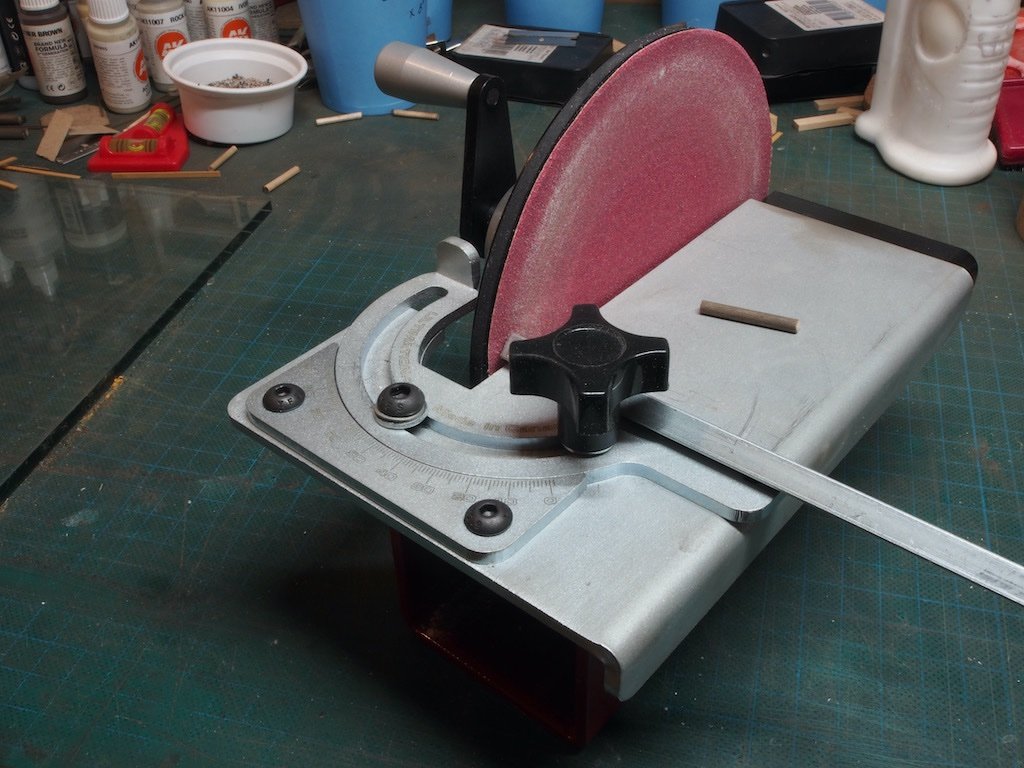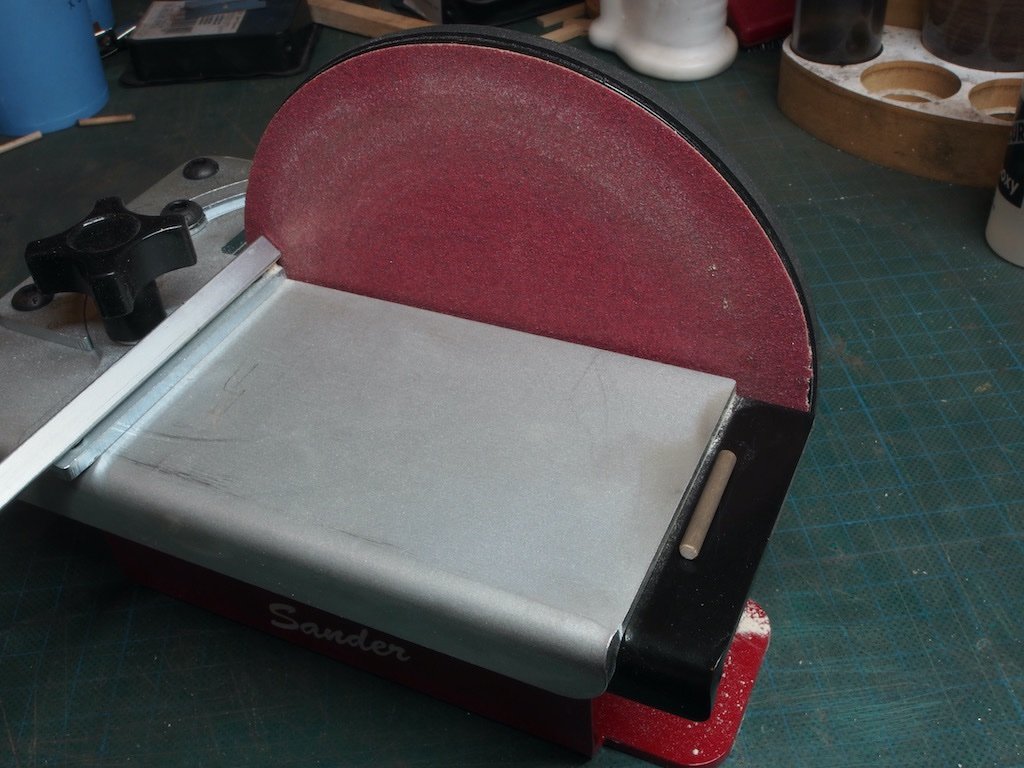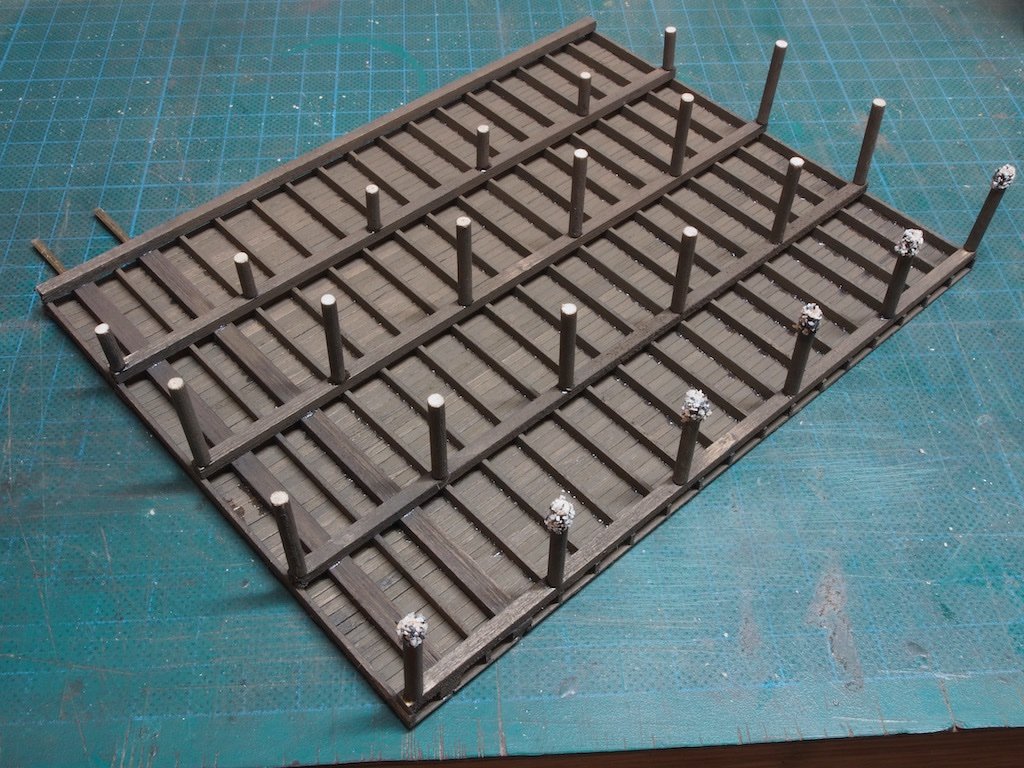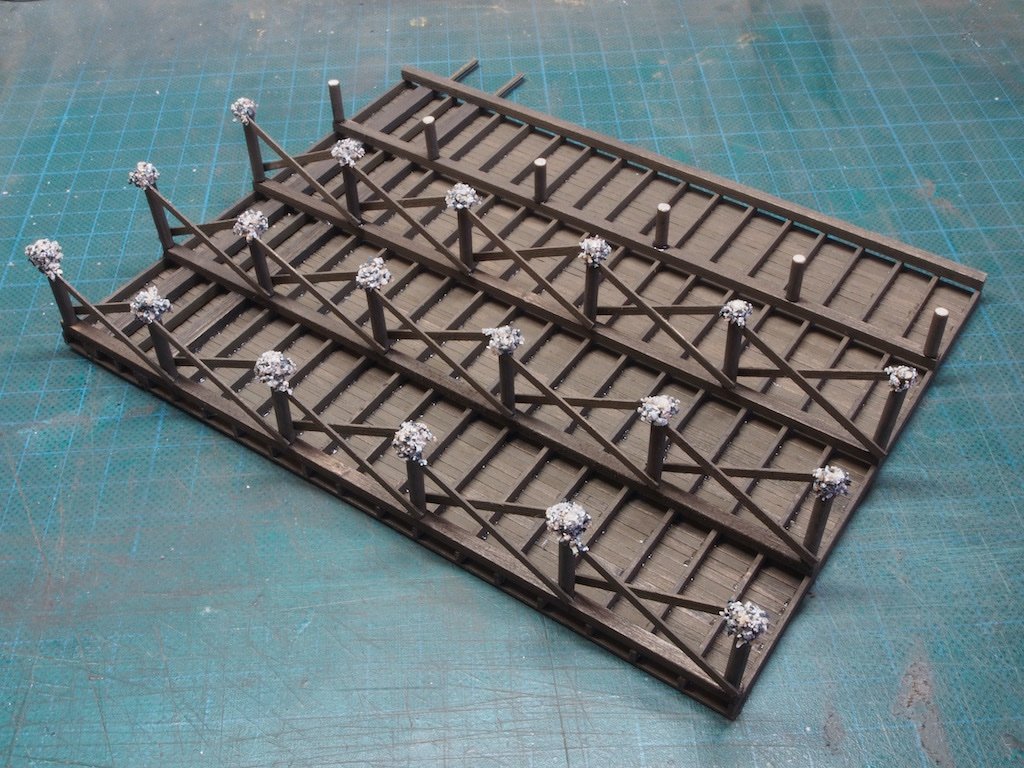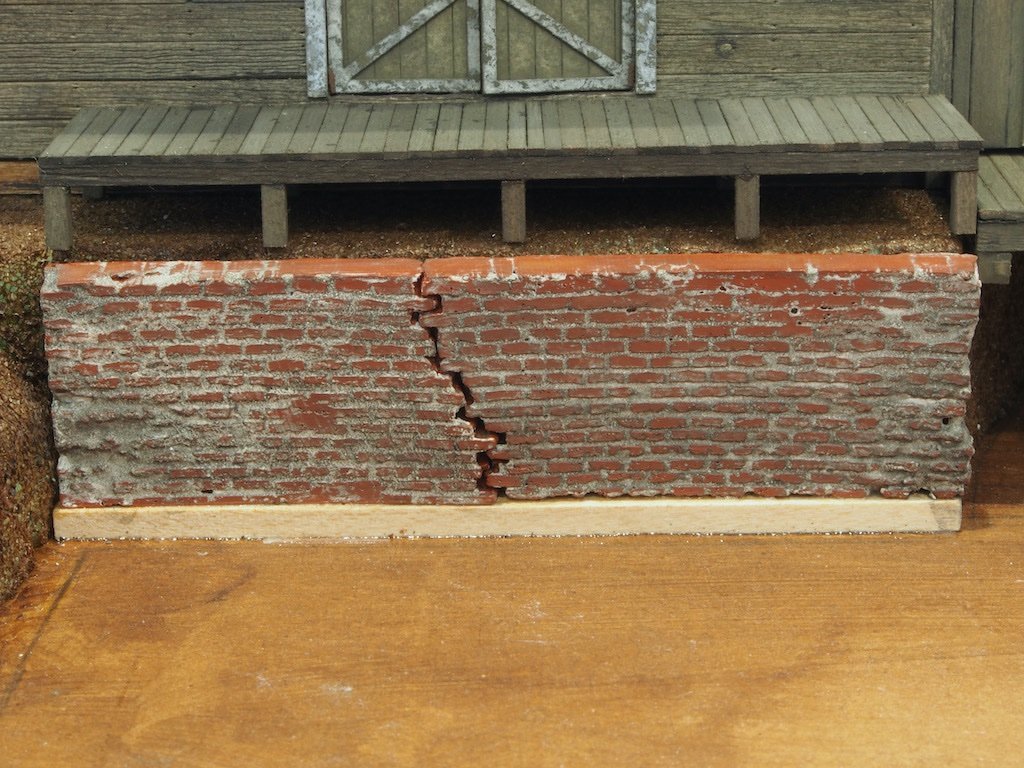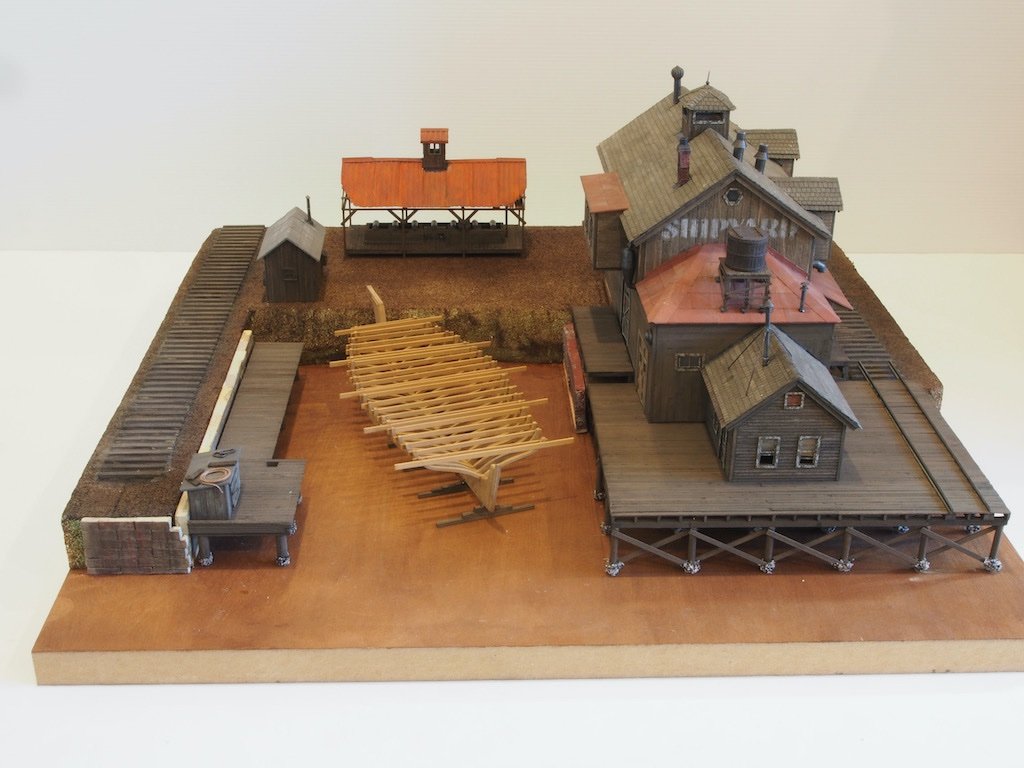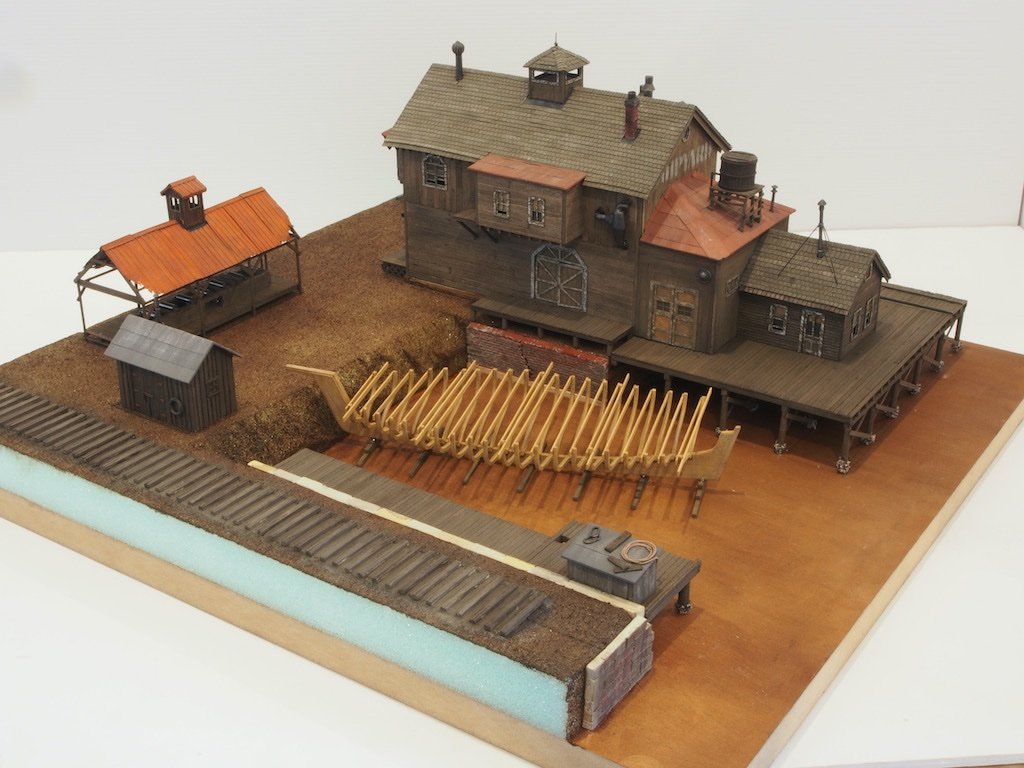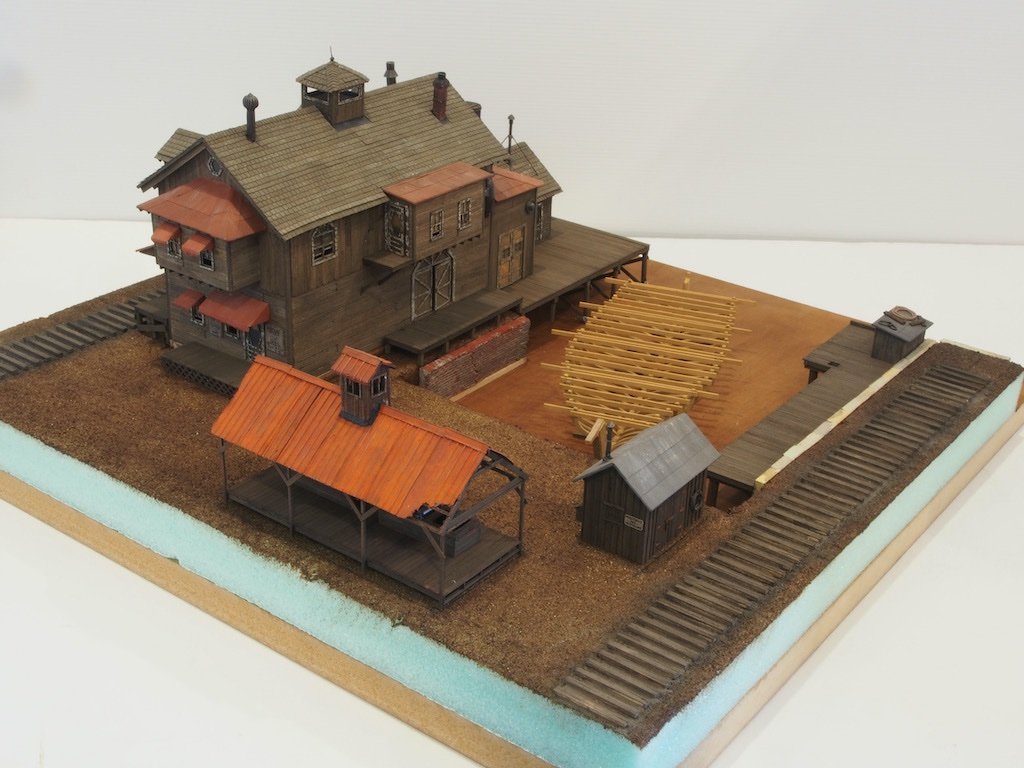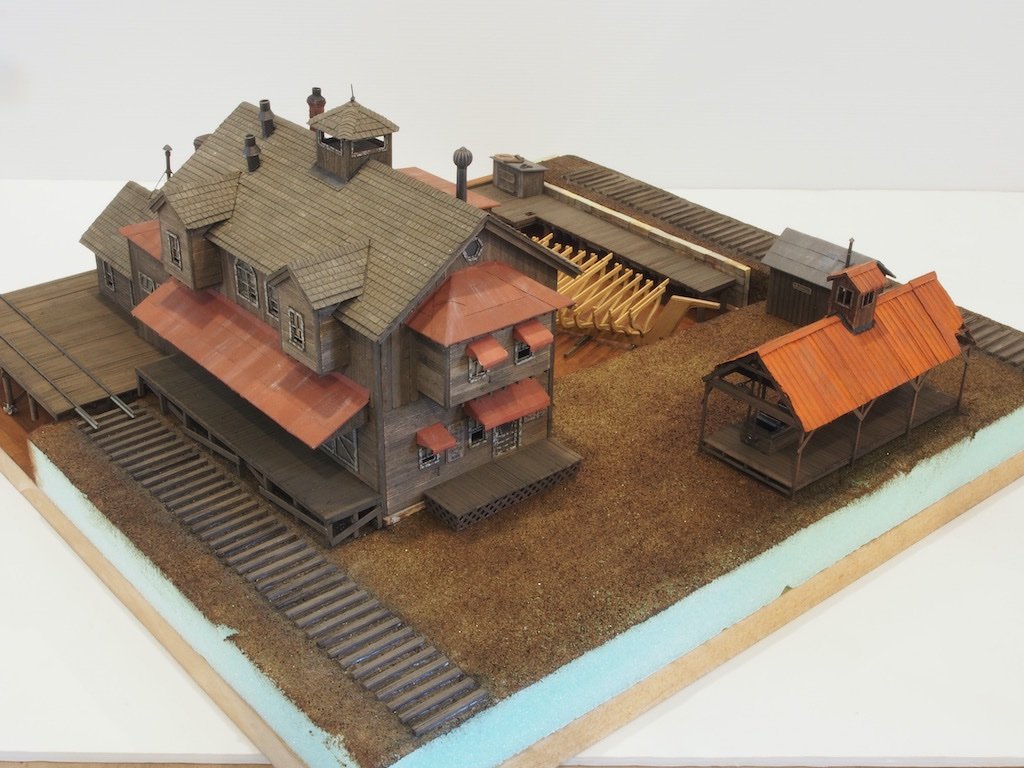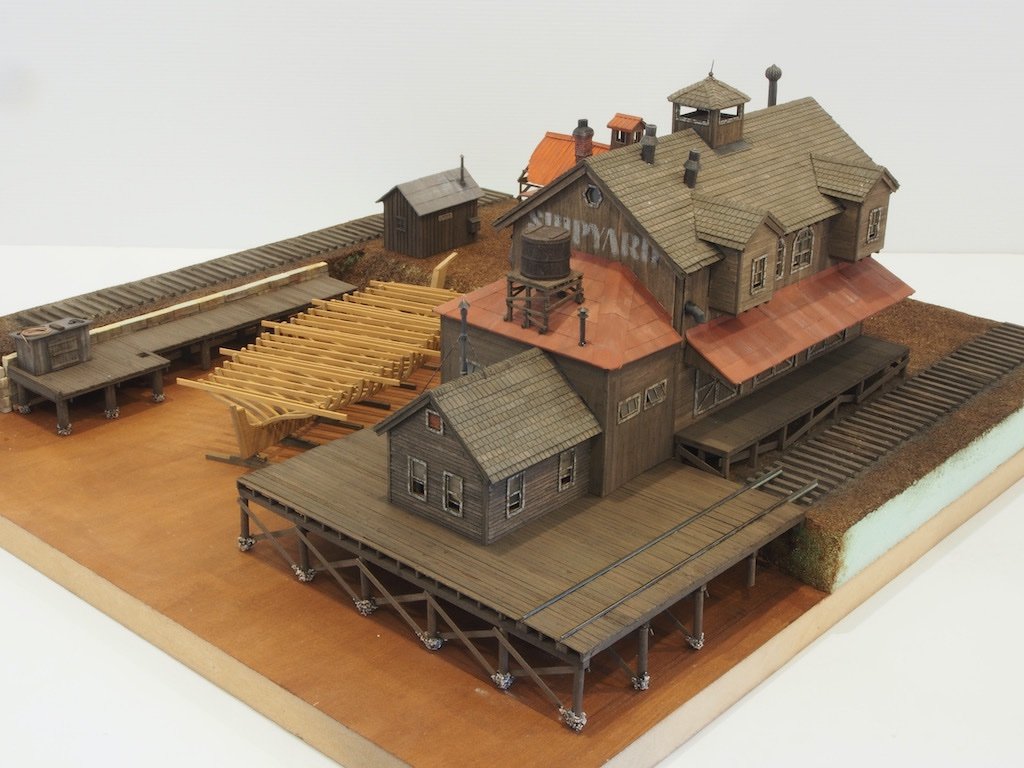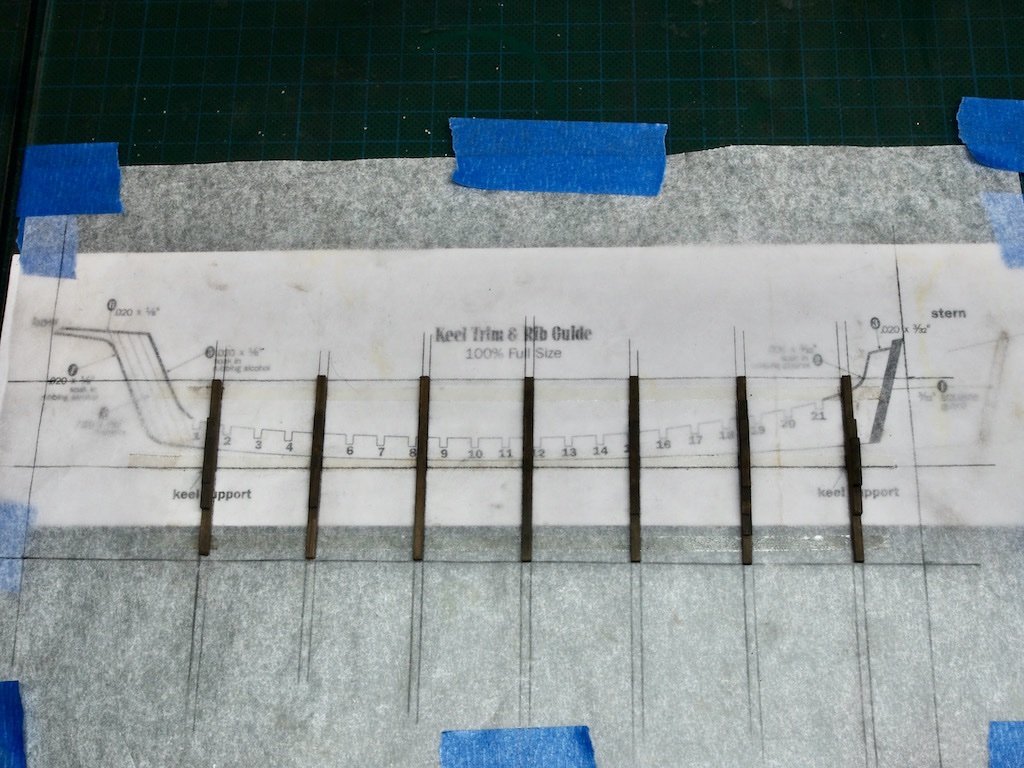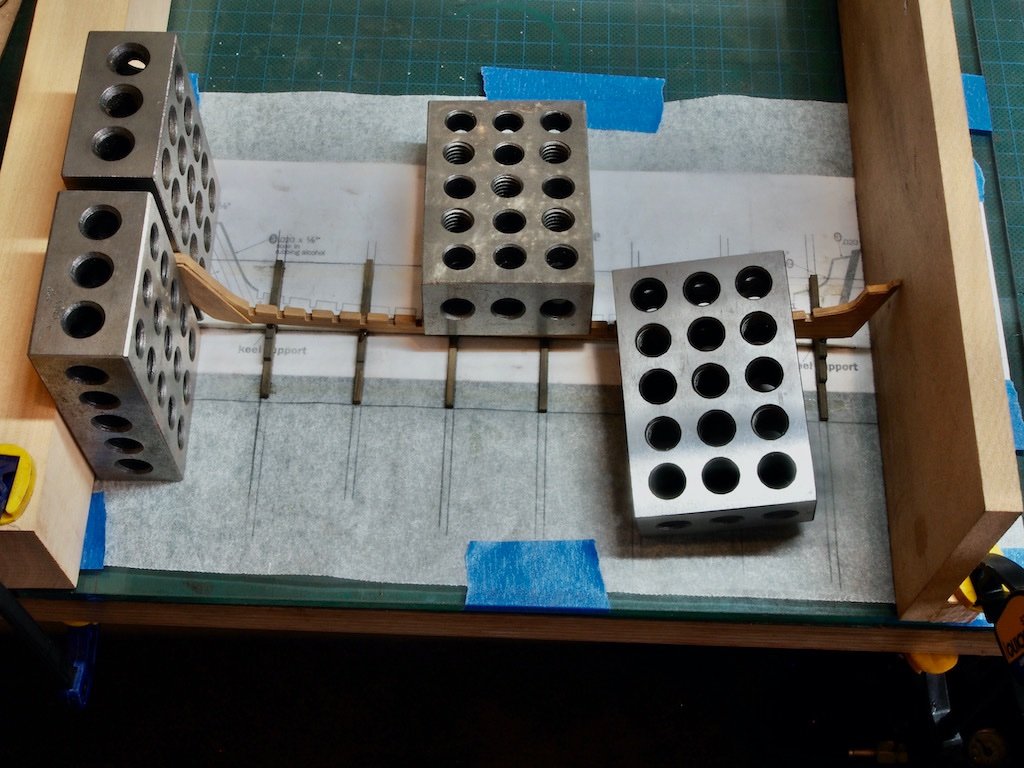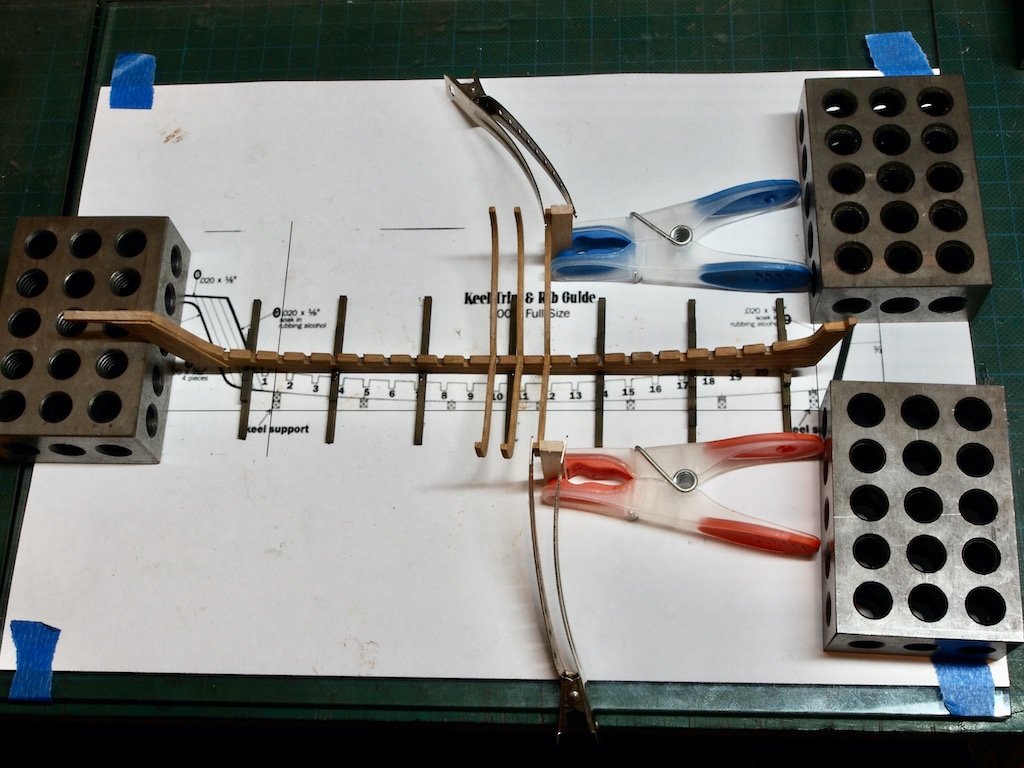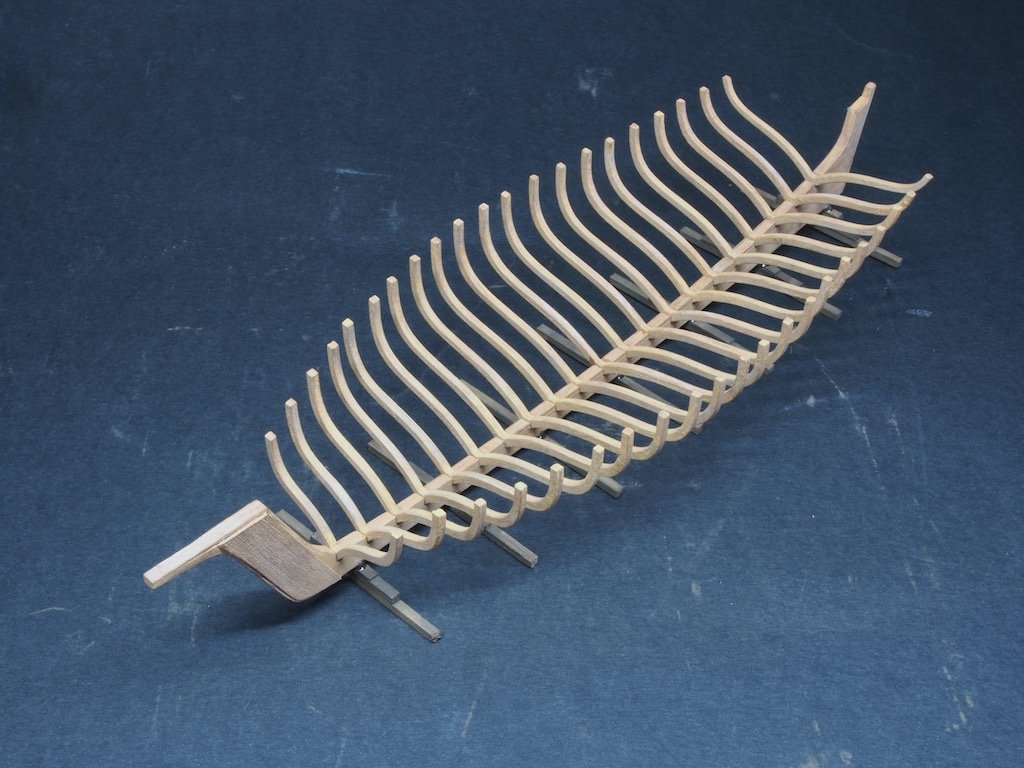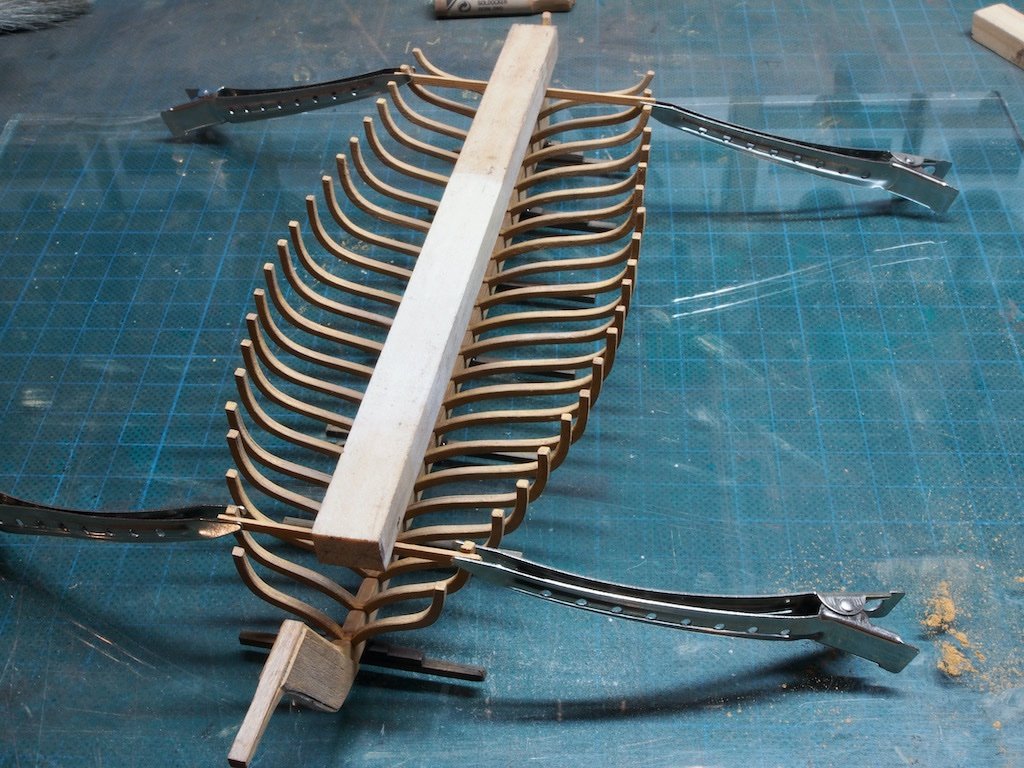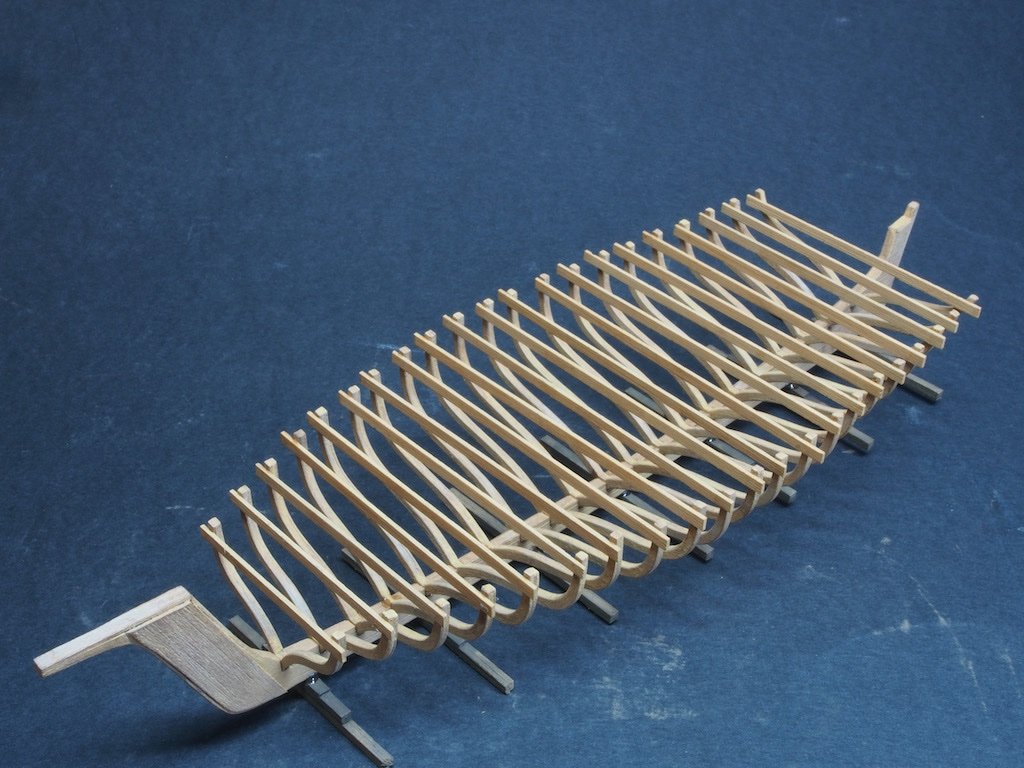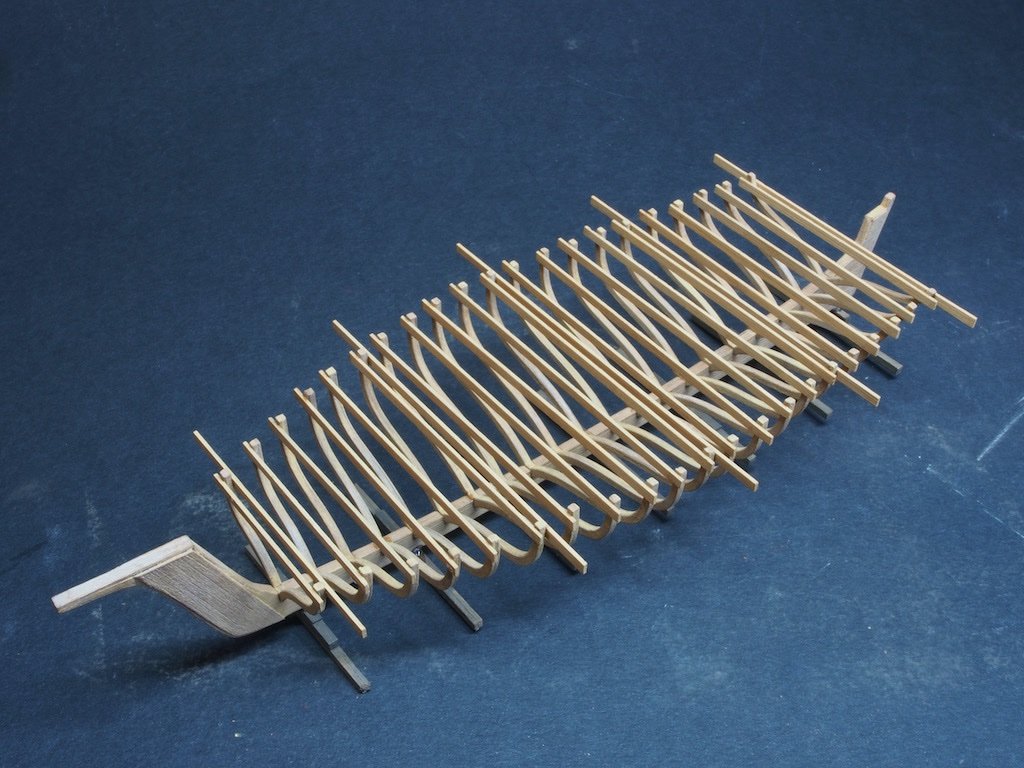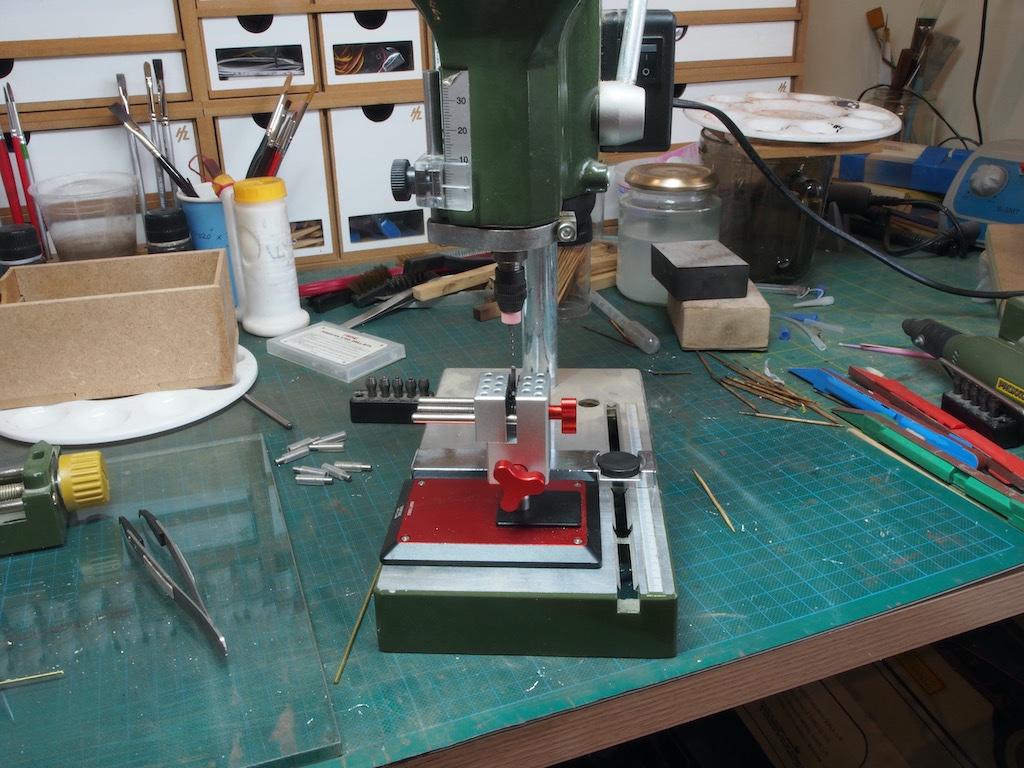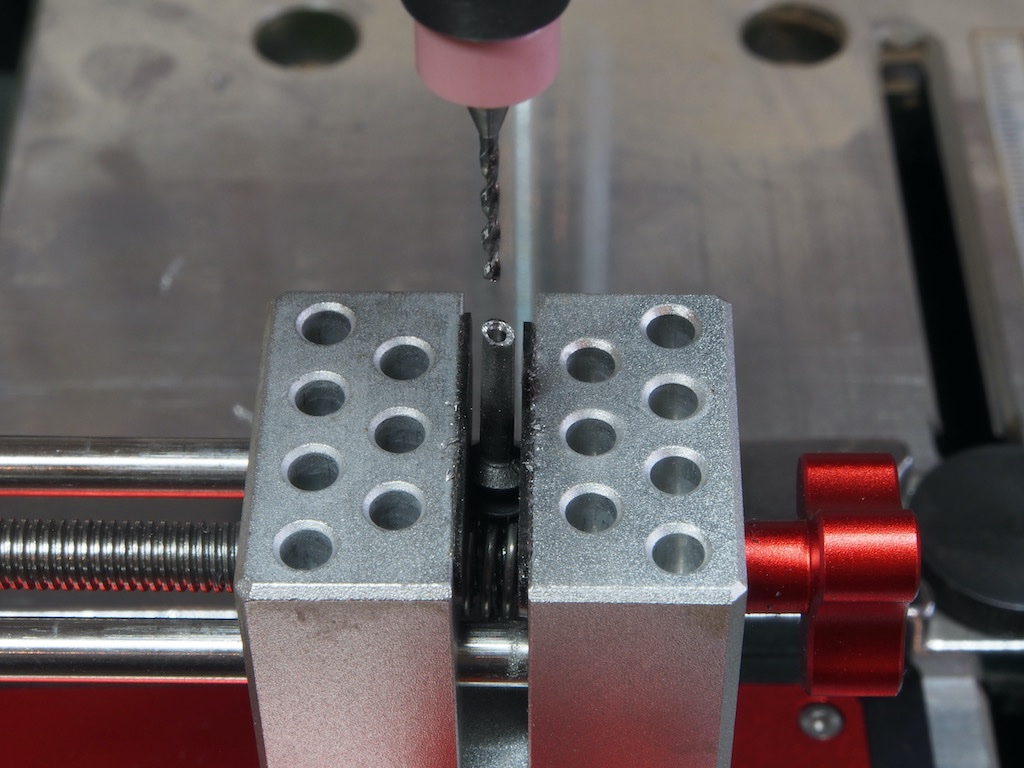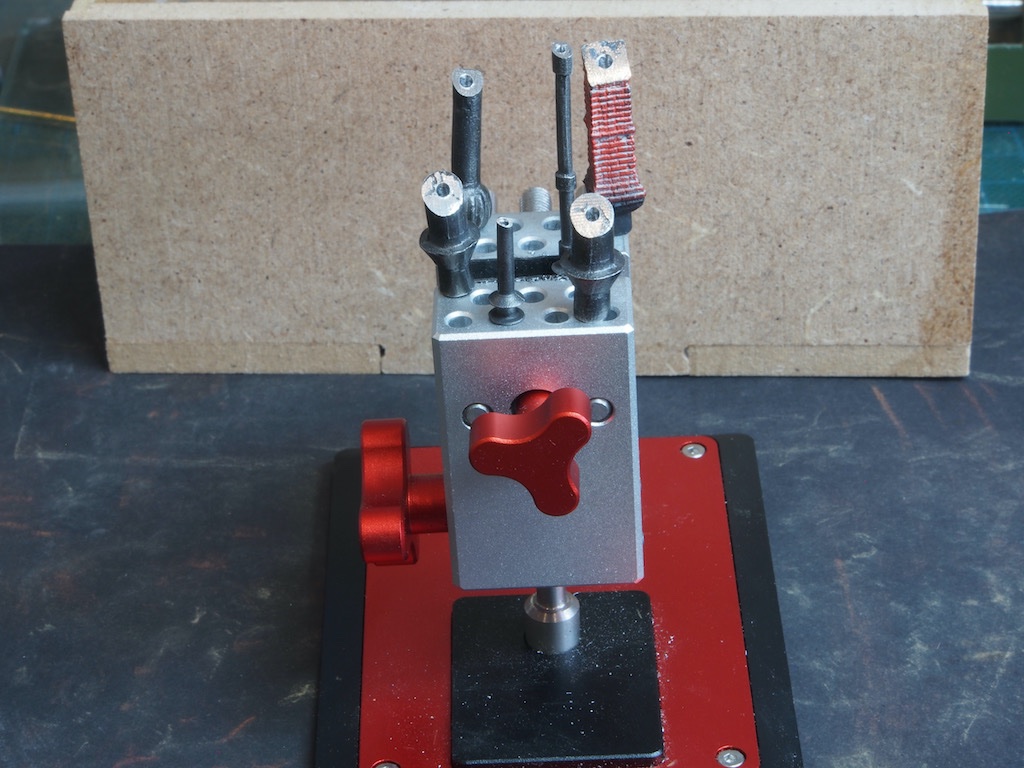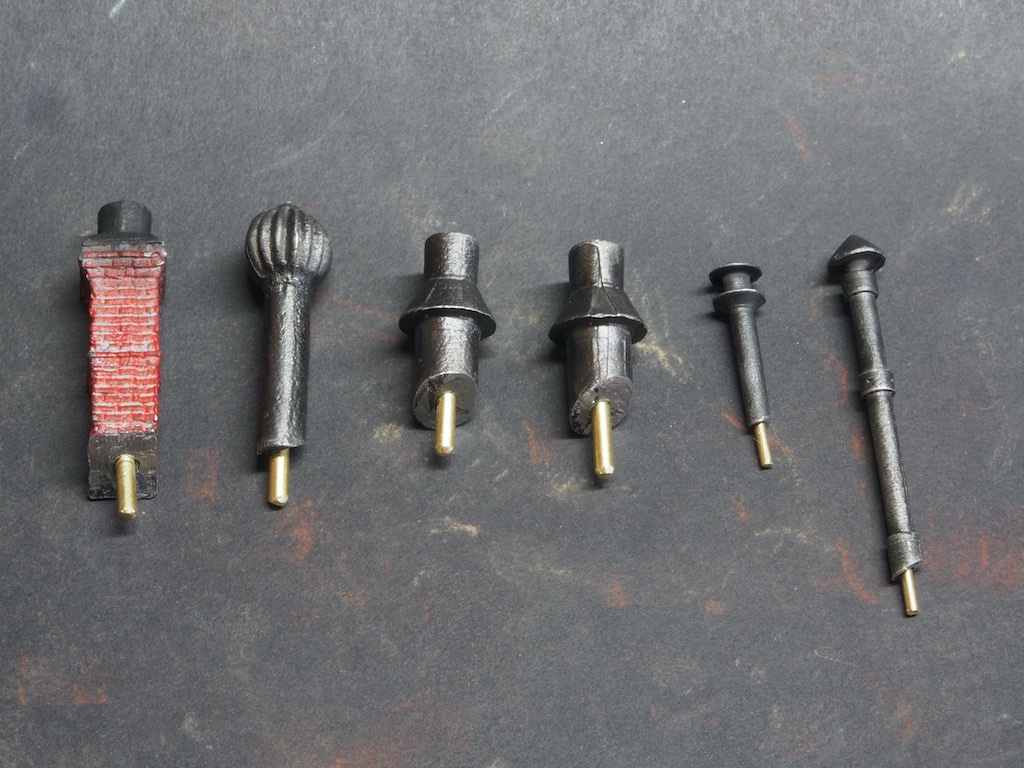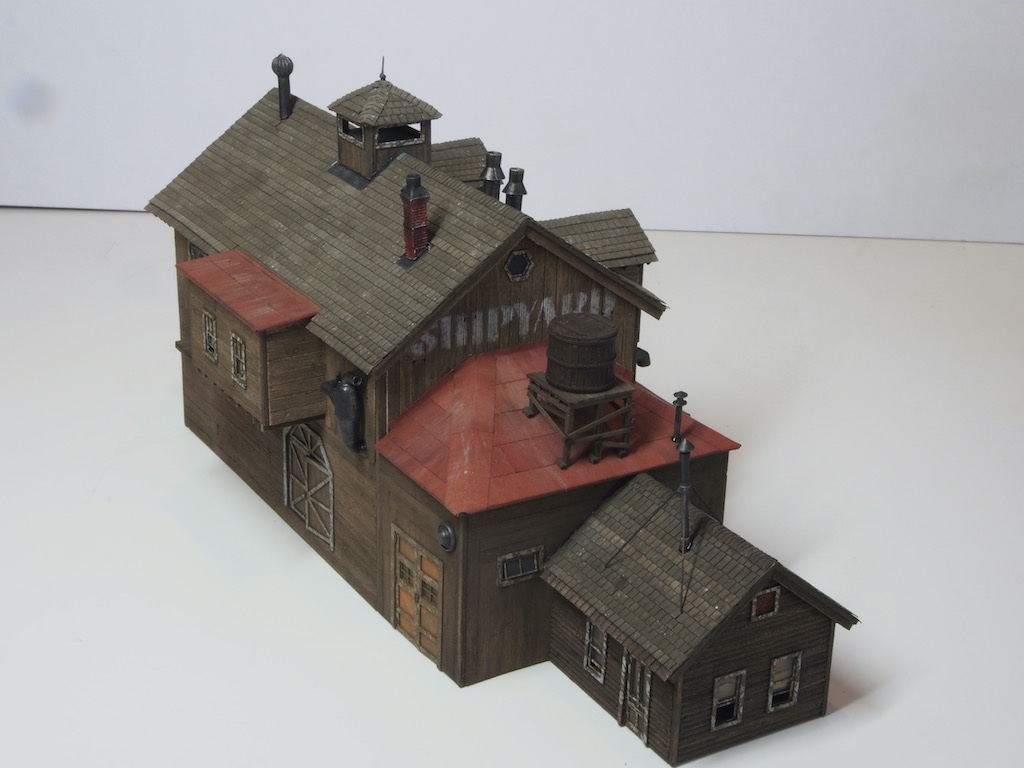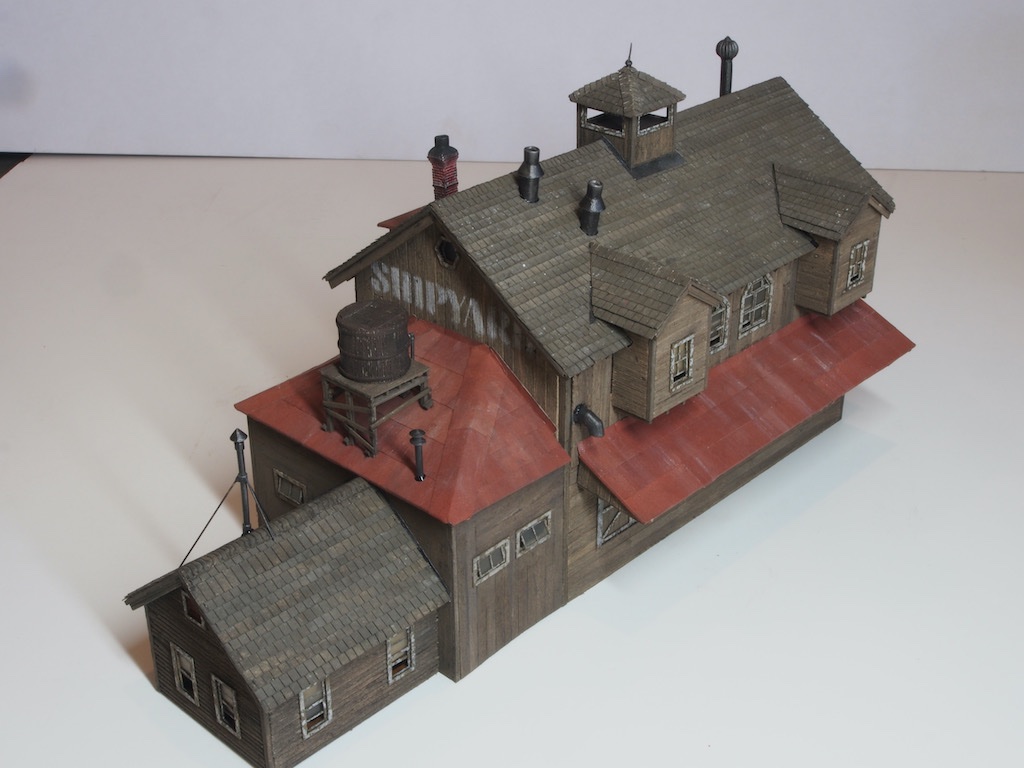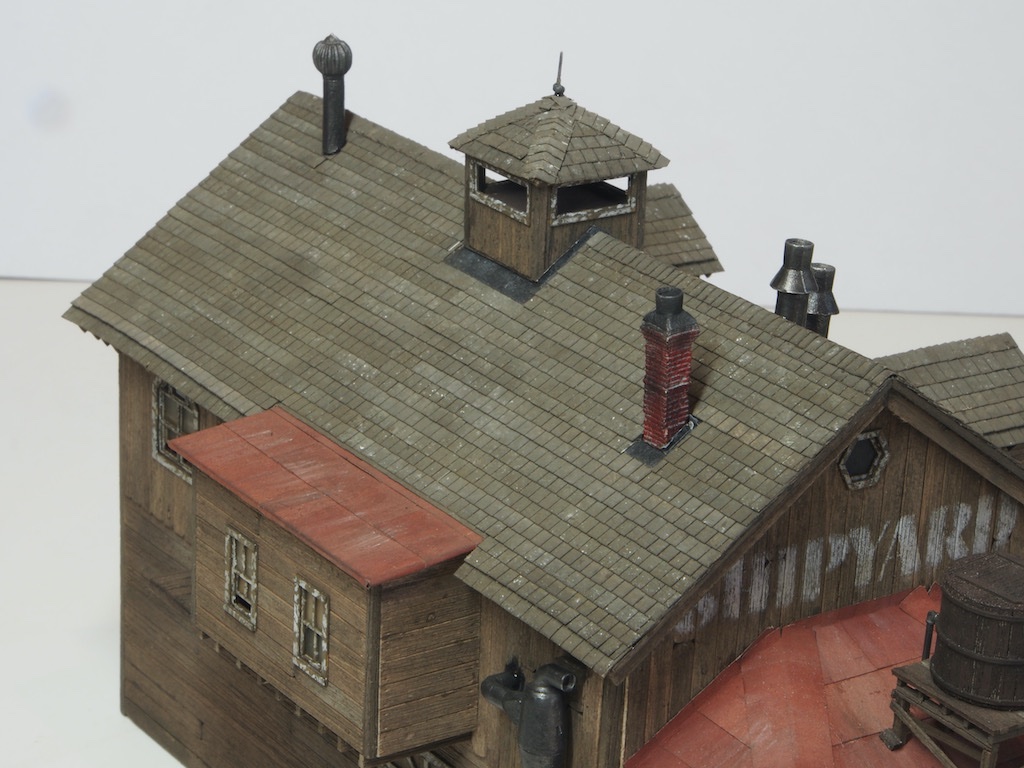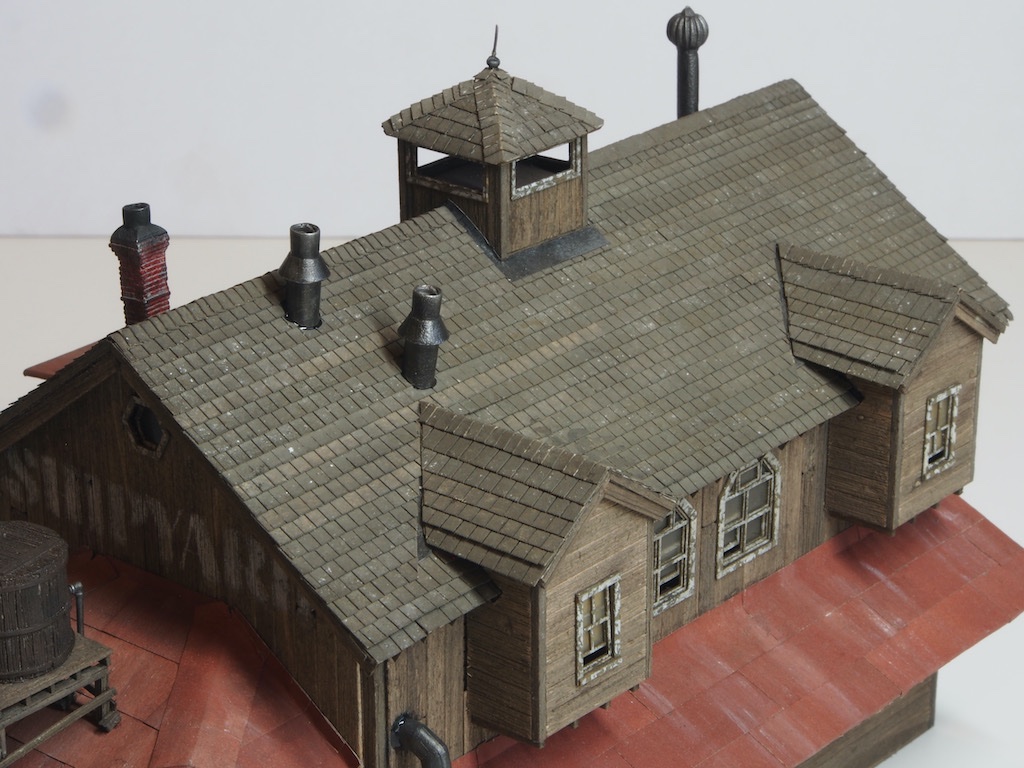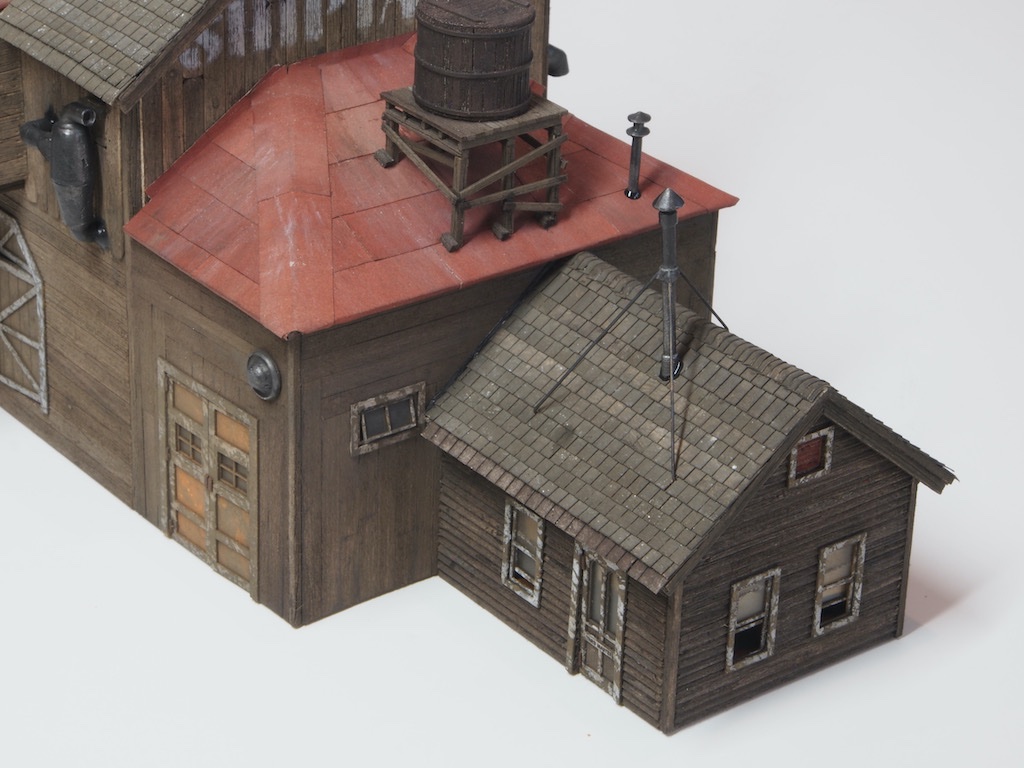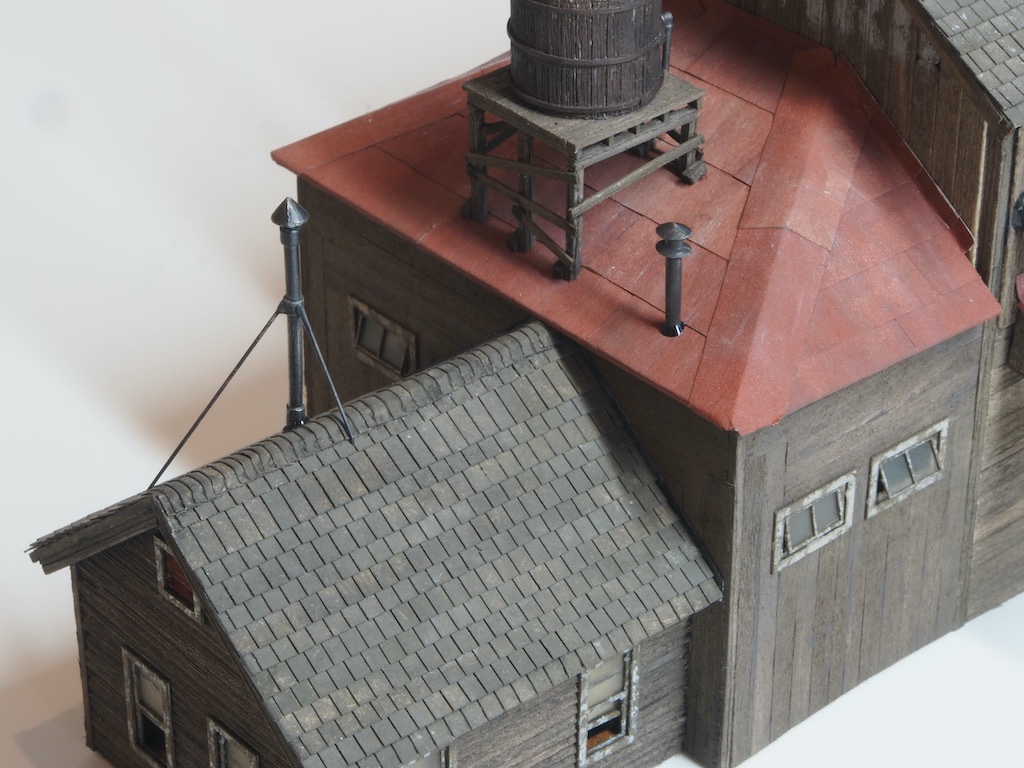-
Posts
4,888 -
Joined
-
Last visited
Content Type
Profiles
Forums
Gallery
Events
Everything posted by gjdale
-
A quick update to say there won’t be an update for a couple of weeks at least. A mishap with a kitchen knife last night resulted in a trip to emergency and a thumb now wrapped in bandages for a week or so. Not too serious - sliced a good part of the pad of my left thumb away - but no modelling (or anything else that requires thumbs for that matter) for at least a week. I’ll be back once work is underway again.
-
The Dock Pilings Completion of the Main Dock is fairly straight forward. Having previously determined the correct length of pilings required, it was simply a matter of graining and staining the 1/8” diameter dowels and cutting them to length. The position of the pilings is indicated on the provided template and the instructions suggest adding three rows of full height pilings and one row of half height pilings – the latter being to accommodate the addition of scenery base. I will digress for one moment to show off my newest toy. It is a hand operated disc sander (by Ultimation) and is brilliant for fine tuning and especially for squaring ends. Although I already own a very good, powered disc sander (Byrnes), the hand operated version offers excellent fine control. I stumbled across this reading through the Sierra West forum. A neat feature is that there is a ledge at the end of the table that provides a perfect 90-degrees – very useful for squaring up ends. Once all the pilings had been cut and the ends de-fuzzed and squared off, I drilled a 0.6mm hole in the end of each and inserted a piece of 0.5mm brass rod to act as a locating pin and to assist holding the pilings in place while the glue dried. The pilings were all attached using 5-min epoxy. The instructions also direct us to add barnacles to the first row of pilings at this stage – a task that would be better left until after the addition of the bracing. Bracing strips are then cut to length (using the template) from 0.020” x 3/32” strip that has been grained and stained. The instructions then again direct us to add barnacles to the first row. This is the right time to do this, as having already done it prior to adding the bracing, I then had to scrape most of it off to allow the bracing to be placed properly. I also decided to add the barnacles to all of the first three rows. That completes the main dock. I then decided to re-visit my brick wall. One of the Sierra West gurus had kindly suggested that it might be a good idea to tone down the brightness of the mortar by applying a light wash of alcohol and ink. I did this and am quite pleased with the result. The next step will be adding the scenery base before “planting” the ship and adding the scaffolding around the ship. I must confess to being somewhat apprehensive about this stage, only because I have never done anything like this before. What could possibly go wrong? In the meantime, here are a few “spin” shots of all the completed work to date. The diorama has been cleverly designed to present an interesting view from all sides. I’ll be back once the scenery base is underway…
-
You’re doing a good job so far Etubino. Despite its many shortcomings, this kit does build up into a very nice model if you are patient and persevere. Be careful with the instructions. If memory serves me correctly, they will “paint you into a corner” regarding placement of some of the guns by advising you to insert completed guns/carrriages through the gun ports to the quarterdeck after the Poop deck has been fitted above. The guns/carriages won’t actually fit through the gun ports, so you will need an alternative solution.
-
Just fabulous Glen. Looking forward to seeing the final rendition with the water effects in place.
-
It's been a little while since the last update. Although progress has been slow (even by my usual glacial standards), there has been progress nevertheless! The Ship Under Construction With the keel and ribs re-stained to a more appropriate colour, I was able to return to building up the ship. To start, I copied an idea from another build log and taped my template to my glass plate, and then covered that with a sheet of baking paper. I then drew some reference lines for the placement of the keel supports and applied three thin strips of double-sided tape before positioning the keel supports in place. With the keel supports held securely in place, I then added a drop of epoxy to the centre of each and placed the keel. In the picture below, you can see my method for ensuring that everything remained square while the epoxy set. Once the keel was securely attached to the keel supports, I was able to start adding the frames/ribs. Again, pinching an idea from the same other build log, I cut a pair of support strips to ensure the ends of the frames were at the same height. These are simply held with a clothes peg to provide a stable base. The tops of the frames are clamped to the top of the support strip while the glue dries. The “clamps” in this case were simply hairdressers sectioning clips – I found these had just the right amount of clamping pressure for the job. It was tediously slow work to attach all the frames as I needed to wait for the glue to set up on each frame before moving on to the next. However, eventually they were all in place. Support braces are then added to the fore side of the top of each frame. We begin by attaching a brace to the second frame from each end, again using the hair clips as clamps, and then a scrap piece of squared wood is used as a guide to ensure the levels are even. The remaining braces were then added two at a time, using the longitudinal guide to ensure that they are all at the same level. Once these braces were all in place, five more braces are added to the aft side of frames 1, 6, 11, 16 and 21. These braces will be part of the scaffolding support at a later stage in the build (once the ship has been placed in the diorama base). We leave the ship for now and return to completing the dock pilings….
-
While I wouldn’t wish this on anyone, it is at least comforting to know that even someone of your skills can still manage to do this Rusty! Thank you for being human after all - it gives the rest of us hope.
- 642 replies
-
- winchelsea
- Syren Ship Model Company
-
(and 1 more)
Tagged with:
-
As others have said Rick, a fine model of which you can be justifiably proud. Congratulations and well done! I’m sure you will enjoy similar success with your Cheerful build.
- 155 replies
-
- Medway Longboat
- Syren Ship Model Company
-
(and 1 more)
Tagged with:
-
Always a joy to watch you work your magic BE. I’m taking a front row seat for this one.
- 648 replies
-
- Indefatigable
- Vanguard Models
-
(and 1 more)
Tagged with:
-
Thanks very much Glen, Gary and Bob - the boo-boo was one of those Homer Simpson moments (Doh!). Just a really stupid, avoidable mistake. You may not notice it, but it will forever be the first thing I notice when I look at it! That’s just the way we are as modellers. DSPIAE is the brand name Bob - I don’t know if it is also an acronym. My drill press is a Proxxon TBM 220. I’ve had this for quite some time now and have found it very useful for general purpose work and it lives on my modelling desk always at hand. I also have the fall back of the Sherline Mill with sensitive drilling attachment for even more precise work when needed. 😊 I think I am well placed in the competition for “he who dies with the most tools wins”………….😉 I just hope that when I do fall off the perch, my wife doesn’t sell my tools for what I told her I paid for them………
-
Thank you very much OC, and to all of the likes. With the roofs now complete, I was able to turn my mind to the roof hardware installation. My concern here was that as these parts were nearly all made from white metal (except the chimney, which is resin) and they all had angled bases to sit against the roof, they would be difficult to hold in place while the glue dried. I decided to add a small spigot to the inboard end of each piece, to be inserted into a corresponding hole to be drilled into the roof. My hope was that the spigot would provide the necessary stability while the epoxy set. For the four larger diameter pieces, a 1/16” (1.6mm) brass rod could be used for the spigot, however for the two smaller diameter pieces, only a 1mm diameter piece could be used. Drilling these holes into the angled bases without the drill bit deflecting or breaking was the key challenge here. Once again, my little DSPIAE vice proved its worth, holding the piece securely under the drill press. Here is one of those smaller pieces being drilled with a 1.1mm bit. (This is the tidy side of my work space!) And a little closer shot. And here are all the pieces drilled and ready to receive their spigots. A short section of brass rod was then epoxied into each of the pieces and locating holes carefully drilled into the roof using a pin vice. The individual pieces were then epoxied in place and the spigots did their job of holding things securely while the glue cured. Once the glue had cured, the stack on the Yard Master’s Office had three supporting wires attached. These were made from 0.5mm diameter brass rod, cut to length, blackened, and then epoxied into place. To assist in positioning these, a small “elbow” was bent into the bottom end of each and inserted into a corresponding locating hole drilled into the roof. Here are a few overall shots of the roof hardware in place. At some point I managed to knock off the top of the lightning rod on the top of the cupola, but managed to glue it back in place with some CA gel – still looks a bit wonky in these pics – may have to try and straighten later. And here is the Yard Master’s Office Roof: In the above photos, you can see the boo-boo I made when shingling the Yard Master’s Office roof. I only spotted this when I was installing the roof hardware. I knew that I had to use a thinner shingle strip for the final row, but I forgot that I should have still used a normal width row first, and then placed the thinner row on top. The result is an elongated row of shingles (second row below the capping). I briefly considered whether this might be salvageable, but in the end decided that it was too high a risk of doing extensive damage. I will just have to live with this one. Looking at the close-up photos, it looks like I need to go back and dull down some of the "pitch" at the base of some of the hardware items too. With the roofs finally complete, I can now return to the ship under construction.
-
The header does seem to have the wrong scale there, but if you look below at all the build log titles, nearly all of them include the scale in the title - either 1:24 or 1/2” (same thing). And Chuck (the kit designer and manufacturer) has given you the definitive answer as well.
- 217 replies
-
- medway longboat
- Syren Ship Model Company
-
(and 1 more)
Tagged with:
-
I’m pulling up a chair for this one too, Kevin. Off to a great start.
- 443 replies
-
- Indefatigable
- Vanguard Models
-
(and 1 more)
Tagged with:
About us
Modelshipworld - Advancing Ship Modeling through Research
SSL Secured
Your security is important for us so this Website is SSL-Secured
NRG Mailing Address
Nautical Research Guild
237 South Lincoln Street
Westmont IL, 60559-1917
Model Ship World ® and the MSW logo are Registered Trademarks, and belong to the Nautical Research Guild (United States Patent and Trademark Office: No. 6,929,264 & No. 6,929,274, registered Dec. 20, 2022)
Helpful Links
About the NRG
If you enjoy building ship models that are historically accurate as well as beautiful, then The Nautical Research Guild (NRG) is just right for you.
The Guild is a non-profit educational organization whose mission is to “Advance Ship Modeling Through Research”. We provide support to our members in their efforts to raise the quality of their model ships.
The Nautical Research Guild has published our world-renowned quarterly magazine, The Nautical Research Journal, since 1955. The pages of the Journal are full of articles by accomplished ship modelers who show you how they create those exquisite details on their models, and by maritime historians who show you the correct details to build. The Journal is available in both print and digital editions. Go to the NRG web site (www.thenrg.org) to download a complimentary digital copy of the Journal. The NRG also publishes plan sets, books and compilations of back issues of the Journal and the former Ships in Scale and Model Ship Builder magazines.







